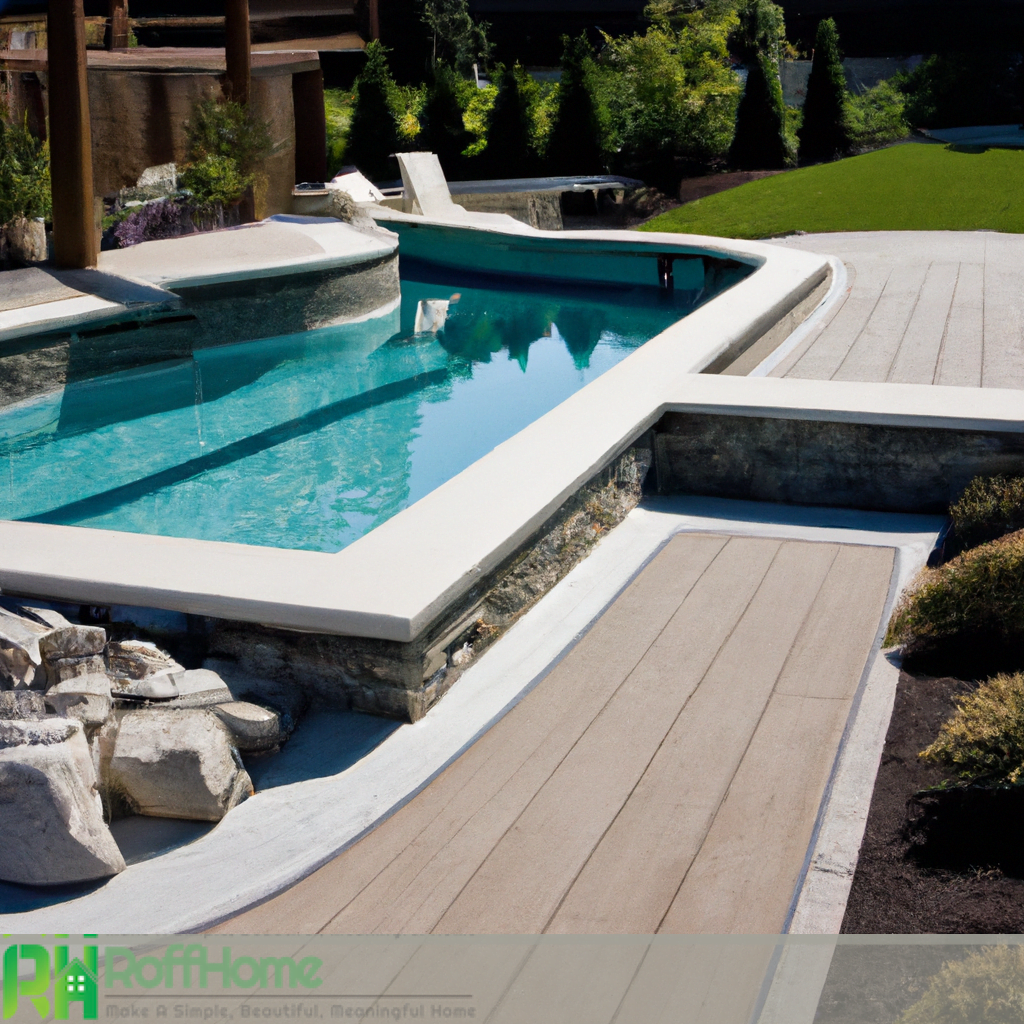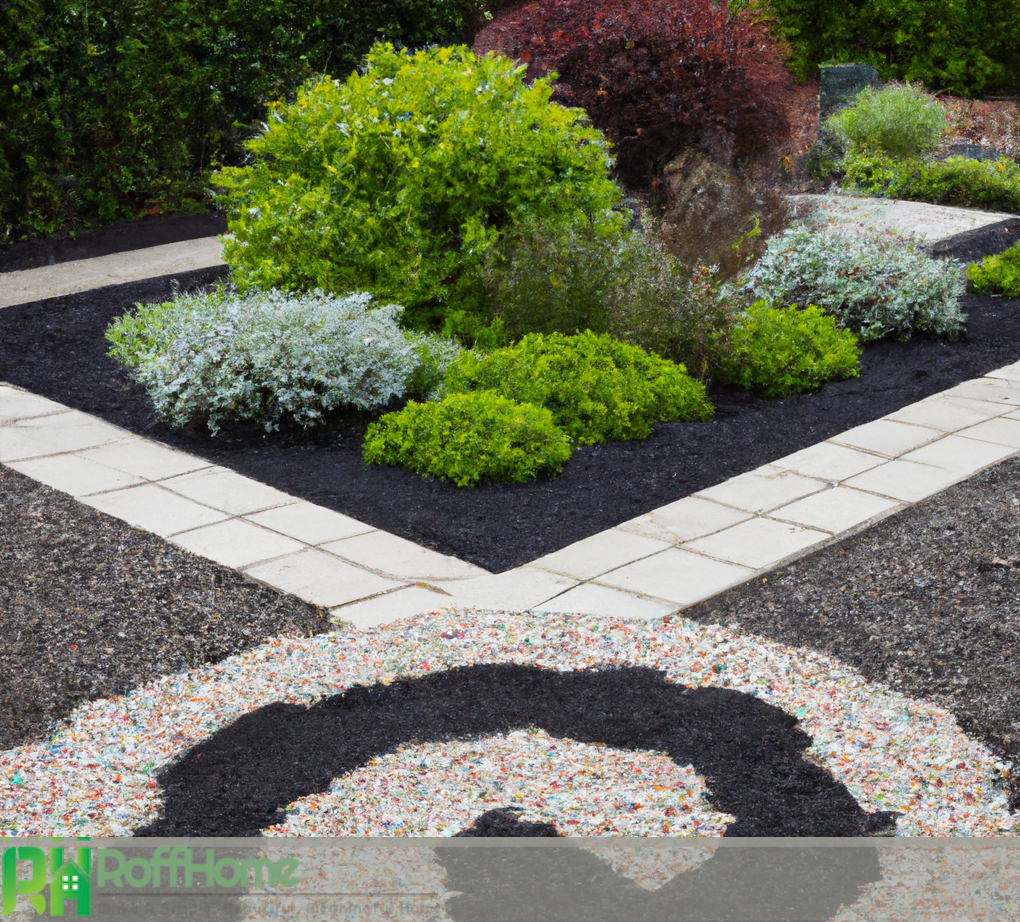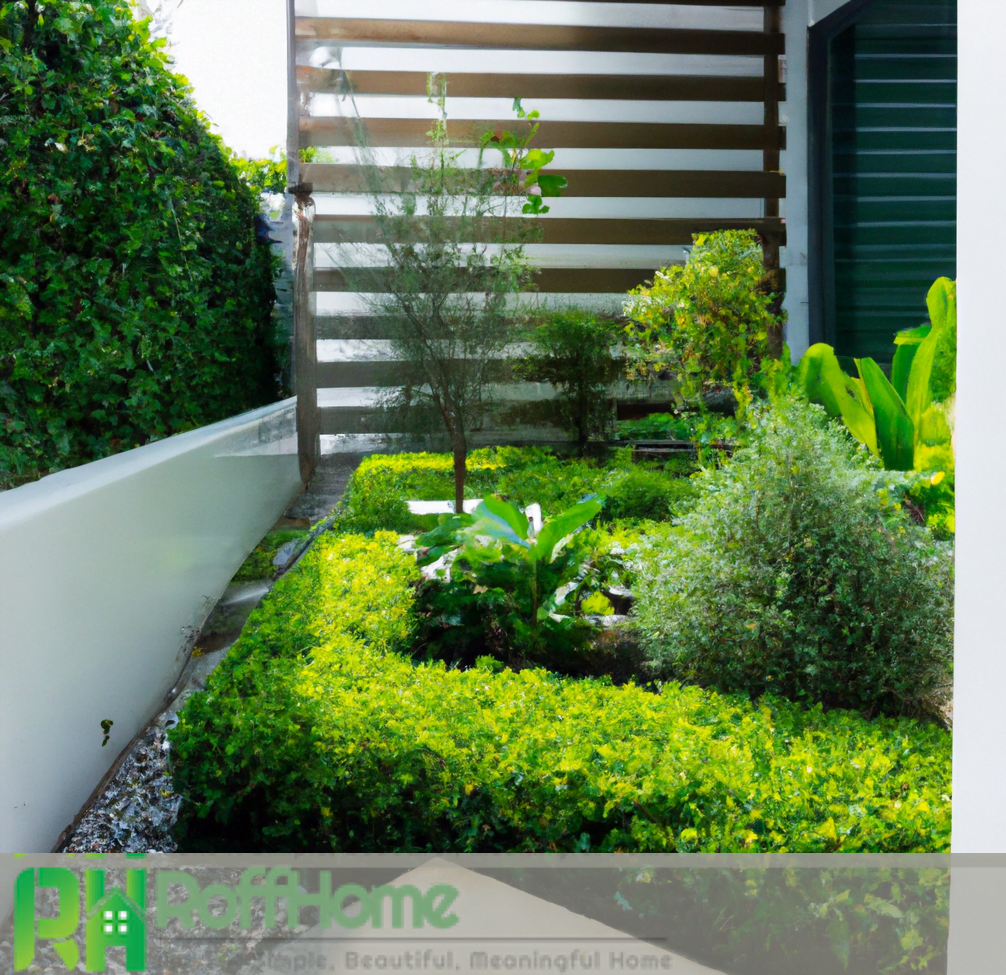Transform Your Outdoor Space with Overlooking Gardens | Expert Tips
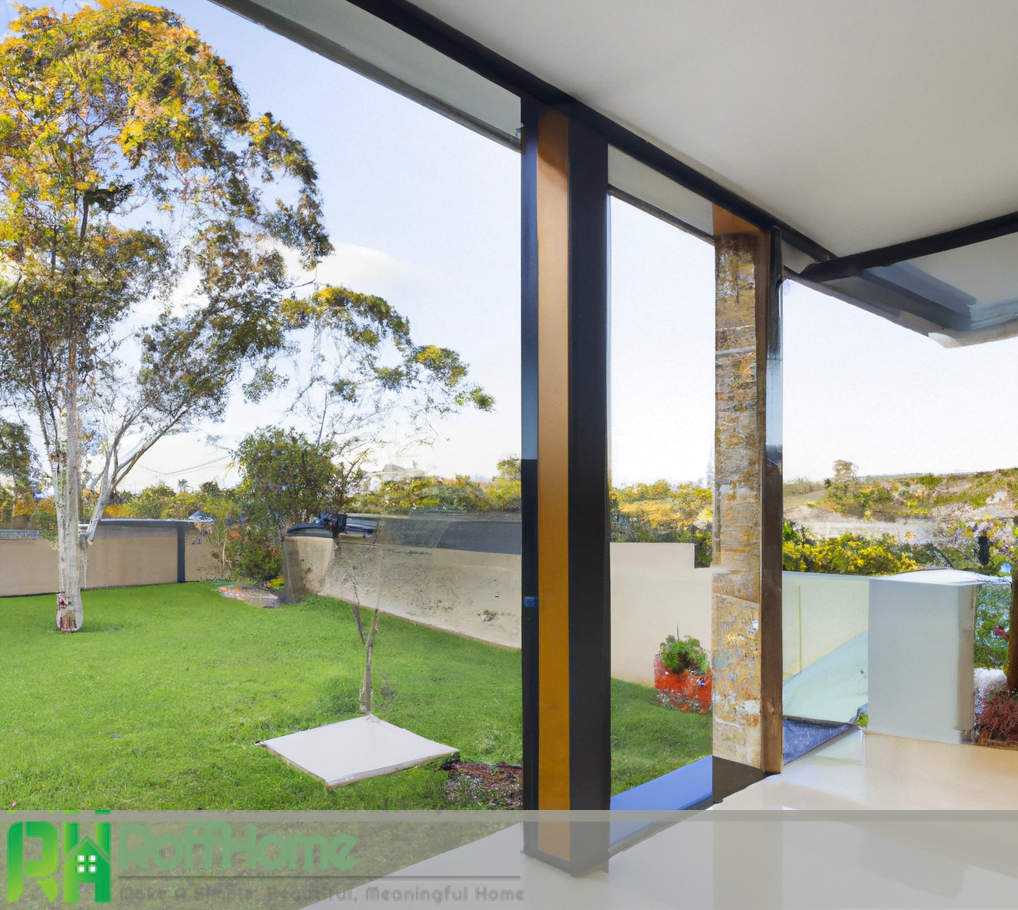
Overlooking a garden can bring many benefits to your home and your life. It’s a beautiful addition to your property and an investment in your well-being. The natural views and greenery can enhance the atmosphere, creating a sense of relaxation and calmness. The aesthetics of a garden view can improve the overall appearance of your home, which in turn can increase its property value.
Home design is crucial in maximizing the benefits of overlooking a garden. Window placement and lighting are important considerations to ensure the garden view can be enjoyed from different angles and at different times of the day. Incorporating indoor-outdoor living spaces can also provide a seamless transition from your indoor to your outdoor space, allowing you to enjoy the garden view all year round.
Even in small spaces, an overlooking garden can make a big impact. Complementary design and plant selection can create a cohesive, inviting look that complements your home’s layout. Urban gardening and eco-friendliness are also becoming increasingly popular, allowing city dwellers to create a green oasis in the heart of the city.
The history and evolution of overlooking gardens throughout different cultures and periods
Overlooking gardens, also known as garden views, have been prominent in many different cultures throughout history. The idea of creating a garden view that can be seen from inside the home has been prevalent in many civilizations, including ancient Egypt, Greece, and Rome. In these cultures, gardens were considered an important aspect of everyday life, providing a place for relaxation, reflection, and socialization.
During the Renaissance period, garden views became a popular feature in the homes of the wealthy. Italian gardens, such as the Villa d’Este and Villa Lante, were designed to be viewed from home, with carefully planned vistas and axial perspectives that drew the eye towards the garden. These gardens also incorporated water features, such as fountains and pools, which added to the visual appeal of the garden view.
In the 18th and 19th centuries, garden views became common in English country homes. The English landscape garden, which aimed to mimic the natural scenery, often included a garden view that could be seen from the house. These gardens also incorporated follies and small decorative buildings in the garden view, adding to its visual interest.
In Japan, the concept of garden views is known as “shakkei,” which means “borrowed scenery.” This involves incorporating the surrounding landscape into the garden design, creating a sense of harmony between the garden and its environment. Japanese gardens are often designed to be viewed from a specific angle, such as a window or a garden path, creating a sense of perspective and depth.
Throughout the 20th century, garden views have continued to evolve and adapt to changing design trends and cultural values. Today, gardens are a popular feature in many modern homes, providing a connection to nature and a sense of tranquility amidst the hustle and bustle of daily life.
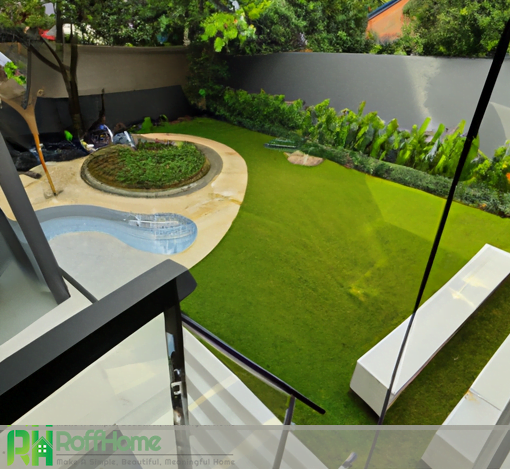
The best plants for an overlooking garden
Choosing the right plants is crucial when designing an garden. The right selection can provide year-round interest, complement the overall aesthetic of the garden, and attract beneficial wildlife such as birds and butterflies. Here are some of the best plants for :
Evergreens: Evergreen trees and shrubs such as holly, boxwood, and arborvitae provide year-round interest and create a lush green backdrop for the garden view.
Ornamental grasses: Ornamental grasses such as feather reed grass, switchgrass, and fountain grass add texture and movement to the garden, especially when they sway in the breeze.
Perennials: Perennials such as black-eyed Susans, coneflowers, and daylilies provide long-lasting blooms throughout the growing season and attract pollinators to the garden.
Climbing plants: Climbing plants such as ivy, clematis, and climbing roses can be trained to grow up trellises or walls, creating a vertical element in the garden and adding visual interest to the garden view.
Trees: Dogwood, cherry, and magnolia provide spring blooms and colorful fall foliage, adding seasonal interest to the garden view.
Succulents: Succulents such as sedum, hens and chicks, and agave are low-maintenance and add a unique texture to the garden, especially when planted in containers.
The Top 10 Plants to Include in Overlooking Garden
An overlooking garden connects to nature and creates a peaceful sanctuary that can be enjoyed from the comfort of your home. When selecting plants for an garden, it’s important to choose beautiful and low-maintenance ones. Here are the top 10 plants to include in :
Lavender: Lavender is a fragrant and attractive plant that adds a pop of color and a lovely scent to the garden view. It’s also drought-tolerant and easy to care for.
Geraniums: Geraniums are a classic garden plant that comes in various colors and is easy to grow. They’re also a favorite of pollinators such as bees and butterflies.
Hostas: Hostas are shade-tolerant plants that come in various sizes and colors. They’re also low-maintenance and provide a lush green backdrop for the garden view.
Hydrangeas: Hydrangeas are a stunning plant that produces large, colorful blooms throughout the growing season. They’re also easy to care for and can thrive in various soil types.
Daylilies: Daylilies are hardy and low-maintenance plants that produce bright, colorful blooms throughout the summer. They’re also drought-tolerant and attract pollinators to the garden.
Coneflowers: Coneflowers are a beautiful, easy-to-grow perennial that produces large and colorful blooms. They’re also drought-tolerant and attract beneficial insects to the garden.
Russian sage is a drought-tolerant and low-maintenance plant that produces tall and airy blooms. It’s also a favorite of pollinators such as bees and butterflies.
Japanese maples: Japanese maples are stunning trees that provide year-round interest with colorful foliage. They’re also small in size and can be grown in containers.
Ornamental grasses: Ornamental grasses such as feather reed grass, switchgrass, and fountain grass add texture and movement to the garden view.
Succulents: Succulents such as sedum, hens and chicks, and agave are low-maintenance and add a unique texture to the garden, especially when planted in containers.
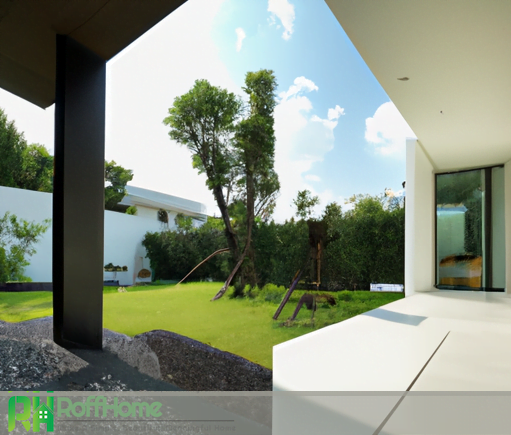
Combining Indoor and Outdoor Living Spaces: Enjoying Overlooking Garden All Year Round
Combining indoor and outdoor living spaces is a popular trend in home design, and an garden is a perfect backdrop for this type of living. Homeowners can enjoy their gardens all year round, regardless of the weather, by creating a seamless transition between indoor and outdoor spaces. Here are some tips for combining indoor and outdoor living spaces in an :
Use large windows: Large windows overlooking the garden can seamlessly transition between indoor and outdoor spaces. This allows homeowners to enjoy the garden view even when they’re inside.
Create a covered outdoor space: A covered outdoor space such as a porch or patio protects from the elements and allows homeowners to enjoy the garden even on rainy days.
Add outdoor heating: Outdoor heating, such as fire pits or patio heaters, can extend the use of the outdoor space into the colder months, allowing homeowners to enjoy the garden view even on chilly days.
Use complementary design: Using complementary design elements such as similar colors and materials indoors and outdoors can create a cohesive and seamless transition between the two spaces.
Add indoor plants: Adding indoor plants such as succulents or ferns can bring the garden’s beauty indoors and connect the two spaces.
Use natural materials: Using natural materials such as stone or wood indoors and outdoors can create a cohesive and natural look.
Add lighting: Adding lighting to the outdoor space can create a warm and inviting atmosphere and allow homeowners to enjoy the garden view even after dark.
Designing an overlooking garden: tips and tricks
Designing an overlooking garden can be challenging, but with some tips and tricks, it can become an enjoyable and fulfilling process. Here are some tips and tricks for designing an:
Determine the purpose: The first step in designing an garden is to determine its purpose. Will it be used for relaxation, entertainment, or to grow plants and vegetables? This will help determine the layout and design of the garden.
Consider the views: An garden is all about the view, so it’s important to consider the views from different angles when designing the garden. Consider the surrounding landscape and how it can complement the garden view.
Please choose the right plants: When choosing plants for an garden, choosing ones that are low-maintenance and appropriate for the climate is important. Consider using a mix of annuals and perennials to create a variety of colors and textures.
Use natural materials: Natural materials such as stone, wood, and gravel can create a cohesive and natural look in an garden.
Create a focal point: A focal point such as a statue or water feature can add interest and draw the eye to an garden.
Incorporate seating: Adding seating such as benches or chairs allows homeowners to enjoy the garden view and relax.
Use lighting: Adding lighting to an garden can create a warm and inviting atmosphere and allow homeowners to enjoy the garden view even after dark.
Consider the layout: The layout of an garden is important to ensure that it’s both functional and aesthetically pleasing. Consider using paths or walkways to create flow and define different garden areas.
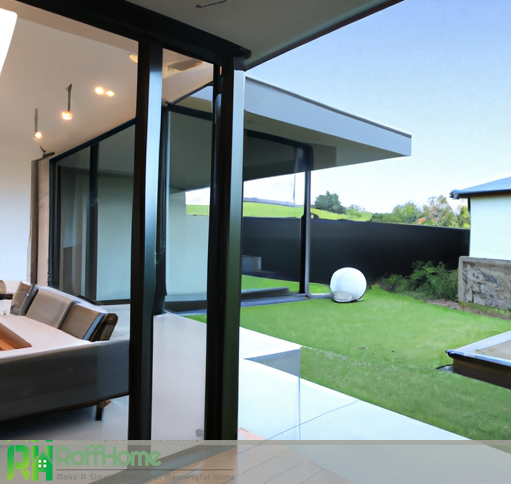
Maximizing the use of space in an overlooking garden
Maximizing the use of space in an garden can be a challenge, especially if the space is limited. However, homeowners can make the most of their garden space with creativity and strategic planning. Here are some tips for maximizing the use of space in an :
Use vertical space: Utilizing vertical space such as walls or trellises can help maximize the use of space in an garden. Vertical gardening allows homeowners to grow plants upwards, freeing up ground space.
Use containers: Containers such as pots or hanging baskets allow homeowners to grow plants in small spaces and move them around as needed.
Incorporate multi-functional furniture: Choosing furniture that can serve multiple purposes, such as storage benches or tables with built-in planters, can help maximize space in an garden.
Use color and texture: Using color and texture in the garden design can create the illusion of depth and make the space feel larger than it is.
Use mirrors: Strategically placing mirrors in the garden can create the illusion of more space and reflect the garden view.
Choose low-maintenance plants: Choosing plants that are low-maintenance and don’t require a lot of space can help maximize the use of space in an garden.
Consider the layout: The garden layout is important to ensure the space is functional and aesthetically pleasing. Consider using paths or walkways to create flow and define different garden areas.
Designing a Garden to Complement Your Home: Choosing Plants and Layout for an Overlooking View
Designing an overlooking garden to complement your home is important in creating a cohesive and harmonious outdoor space. Here are some tips for choosing plants and layouts for an overlooking view:
Consider the style of your home: The style of your home should be a consideration when choosing plants and designing the layout of your garden. Consider using classic plants such as roses and hydrangeas if you have a traditional home. Consider using more minimalist and architectural plants such as succulents and grasses for a modern home.
Choose plants that thrive in your climate: Choosing plants that thrive in your climate is essential for ensuring that your garden will thrive and look beautiful year-round. Research which plants are best suited for your climate and soil type.
Choose a color scheme: Choosing a color scheme for your garden can help create a cohesive and visually appealing space. Consider using a color wheel to choose complementary colors and create a harmonious design.
Use layers: Layering plants of different heights and textures can add depth and interest to an garden. Consider using taller plants at the back of the garden and shorter plants towards the front.
Create focal points: Creating focal points such as a sculpture or water feature can add interest and draw the eye to an garden. Consider placing these focal points where they can be viewed from the house.
Use paths and walkways: Using paths and walkways can create flow and define different areas of the garden. Consider using natural materials such as gravel or stepping stones to create a cohesive and natural look.
Use lighting: Adding lighting to an garden can create a warm and inviting atmosphere and allow homeowners to enjoy the garden view even after dark.
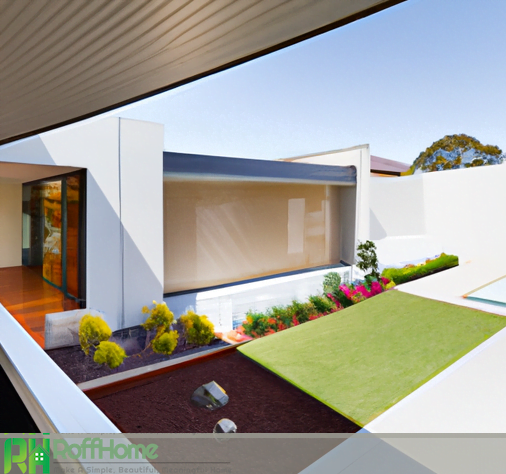
How to maintain an overlooking garden throughout the seasons
Maintaining an overlooking garden throughout the seasons can be a challenge, but keeping the garden looking beautiful year-round is essential. Here are some tips for maintaining an garden throughout the seasons:
Spring: In the spring, it’s important to prune and clean up the garden after winter. Remove dead or damaged branches, and prune shrubs and trees as needed. Begin planting new flowers and vegetables, and fertilize the soil to encourage healthy growth.
Summer: In the summer, watering becomes especially important. Water plants deeply and regularly, especially during hot and dry weather. Remove weeds and deadhead flowers to encourage continued blooming. Consider using mulch to help retain moisture in the soil and reduce weed growth.
Fall: In the fall, it’s important to prepare the garden for winter. Remove any dead or diseased plants, and cut back perennials. Plant bulbs for spring flowers, and prepare the soil for winter by adding compost or other organic matter.
Winter: In the winter, it’s important to protect plants from harsh weather. Cover sensitive plants with burlap or other protective materials, and mulch the soil to protect plant roots. Consider planting winter vegetables such as kale or Brussels sprouts.
Year-round: Throughout the year, it’s important to monitor the garden for pests and diseases. Use organic pest control methods whenever possible, and keep the garden clean and debris-free.
The Benefits of Living in a House with an Overlooking Garden
Living in a house with an overlooking garden can provide many benefits for homeowners. Here are some of the key benefits:
Improved mental health: Spending time in nature has been shown to positively impact mental health, reducing stress and anxiety and improving mood. An garden provides a peaceful, tranquil space for homeowners to unwind and connect with nature.
Increased property value: An garden can increase the value of a property, making it a wise investment for homeowners. A well-designed and maintained garden can be a major selling point for potential buyers.
Better air quality: Plants in an garden help to improve air quality by absorbing pollutants and producing oxygen. This can improve the overall health of homeowners and their families.
Increased privacy: An garden can provide a sense of privacy and seclusion for homeowners, especially in urban or densely populated areas. Fences, walls, or hedges can create a barrier between the garden and the outside world.
Improved physical health: Maintaining an garden requires physical activity, such as planting, weeding, and pruning. This can provide a low-impact form of exercise and improve physical health.
Increased opportunities for entertaining: An garden provides a beautiful and natural setting for entertaining guests. Homeowners can host barbecues, dinner parties, or other gatherings in their outdoor space.
Better connection with the environment: An garden provides homeowners a closer connection to the natural world, allowing them to observe and appreciate the changing seasons, weather patterns, and wildlife in their area.
An overlooking garden can provide numerous benefits for homeowners, including improved mental and physical health, increased property value, and a closer connection to nature. Homeowners can create a beautiful and relaxing environment to enhance their daily lives by designing, maintaining, and utilizing this outdoor space.

